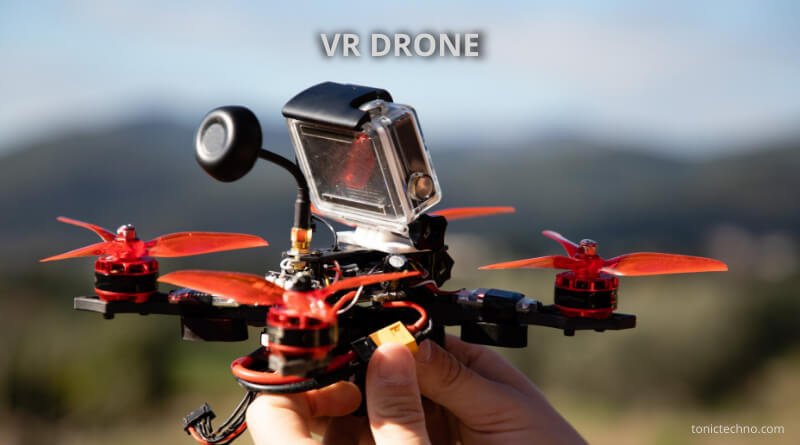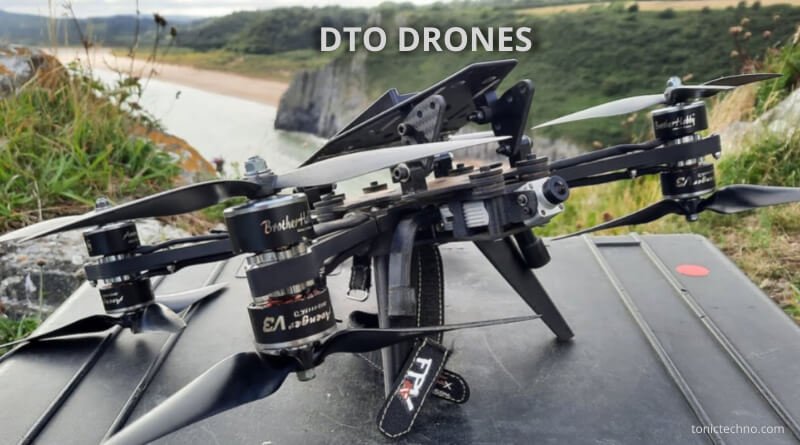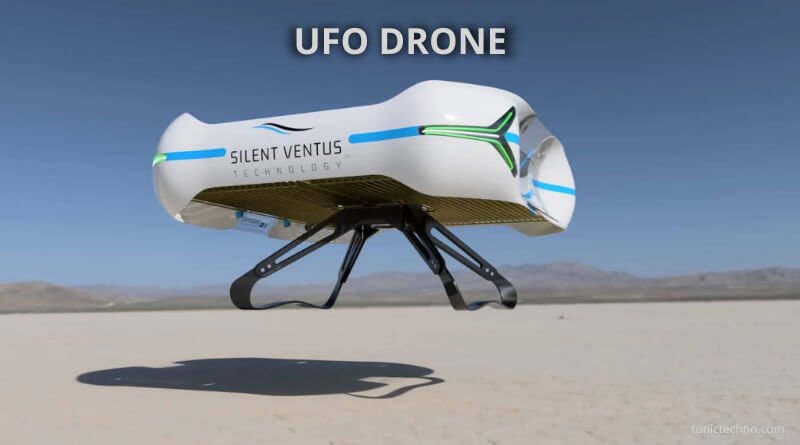Embarking on a thrilling journey into the world of technology, I discovered the mesmerizing realm of VR drones. As an enthusiast well-acquainted with the buzzing propellers and immersive landscapes, the experience has been extraordinary. Flying high with a virtual reality headset, I’ve marveled at the seamless integration of cutting-edge VR technology with drones. From exploring new horizons in recreational settings to witnessing the transformative impact on various industries, the applications are limitless. Join me in this exhilarating blog post as I share my seasoned insights into the fascinating universe of VR drones, where innovation meets adventure and the skies are limitless.

Understanding VR Technology
Overview of Virtual Reality (VR)
Virtual Reality, often called VR, is a fascinating technology that transports users to simulated environments, providing a sense of immersion. Users can experience a 3D environment that feels incredibly real through specialized headsets. This technology engages our senses, offering a visual and auditory experience miming the physical world. VR has found applications in various fields, from gaming to healthcare, and its popularity continues to soar.
Integration of VR in Drones
The marriage of Virtual Reality and drones has created an exhilarating synergy, opening up new possibilities for enthusiasts and professionals alike. By integrating VR technology into drones, operators can now fly these unscrewed aerial vehicles with unprecedented control and perspective. Pilots wearing VR headsets can see through the drone’s camera in real time, offering a first-person view that adds a thrilling dimension to the flying experience. This integration enhances recreational drone flights and proves invaluable in industries like aerial photography, surveying, and even search and rescue missions. The fusion of VR and drones is a testament to the continuous evolution of technology, providing users with a unique and immersive way to interact with the world around them.
Components of VR Drones
VR Headsets for Pilots
Venturing into the exciting world of VR drones, one can’t overlook the pivotal role of VR headsets. These headsets serve as the pilot’s window into the drone’s perspective, providing a seamless and immersive experience. Fitted with high-resolution displays and motion sensors, VR headsets allow pilots to feel as if they are soaring through the skies alongside their drones. The integration of these headsets enhances the thrill of flying while offering a realistic view of the surroundings, making it a must-have component for any VR drone enthusiast.
Drone Hardware and Software Requirements
Behind the scenes, the success of a VR drone flight relies on the harmony between hardware and software. Drones have cameras and sensors that capture the environment on the hardware front, feeding real-time data to the VR headset. The software involves specialized applications facilitating communication between the drone and the VR headset, ensuring a seamless and responsive flying experience. Understanding these hardware and software requirements is crucial for enthusiasts and professionals alike, as it determines the quality and functionality of the VR drone setup. Exploring this technological symbiosis adds depth to the exhilarating journey of navigating the skies with a VR drone.
Applications of VR Drones
Recreational Use of VR Drones
Embarking on the journey of VR isn’t just reserved for tech enthusiasts; it’s an exciting venture for recreation. Integrating virtual Reality adds a new dimension to the joy of flying drones. With VR headsets, recreational pilots can experience a bird’s-eye view, immersing themselves in the thrill of flight as if they were in the cockpit. Whether navigating obstacle courses or capturing breathtaking aerial footage, the recreational use of VR drones opens up endless possibilities for enjoyment and exploration.
Professional Applications in Industries
Beyond the realm of hobbyists, VR have established themselves as indispensable tools in various industries. Professionals harness the power of VR-enhanced drones for tasks ranging from aerial photography and surveying to agriculture and search and rescue missions. Viewing and controlling drones through VR technology provides unparalleled precision and efficiency, revolutionizing workflows in fields where a bird’s-eye perspective is crucial. As industries continue to embrace this innovative fusion of technologies, the applications of VR drones in the professional landscape are poised for further expansion and refinement.
Advantages of VR Drones
Enhanced Pilot Experience
Embarking on a drone adventure takes on a whole new level of excitement with the enhanced pilot experience of VR technology. Pilots wearing VR headsets are transported into the drone’s perspective, allowing them to see the world from a unique vantage point. This immersive experience adds an element of thrill, making each flight feel like a virtual journey through the skies. The heightened sense of presence and control contributes to an unparalleled and unforgettable recreational experience for drone enthusiasts.
Improved Precision and Control
Precision and control are the keystones of successful drone operations, and VR technology elevates these aspects to new heights. By integrating VR headsets, pilots gain a real-time, first-person view, enhancing their ability to navigate with unparalleled accuracy. The sense of depth and spatial awareness provided by VR contributes to precise maneuvering, making tasks such as capturing accurate aerial footage or executing complex flight patterns more achievable. This improved precision and control enhance the overall flying experience and make VR invaluable tools in various professional applications where accuracy is paramount.
Challenges in VR Drone Technology
Technical Limitations
Embarking on the exhilarating journey of VR drones also brings forth its share of technical challenges. Despite their immersive experiences, VR drones grapple with technical limitations that impact their performance. Issues such as limited battery life, signal interference, and the need for robust processing power present hurdles enthusiasts and developers are working to overcome. Addressing these technical limitations is crucial for unlocking the full potential of VR drone technology and ensuring a seamless and enjoyable user experience.
Regulatory and Safety Concerns
Navigating the skies with VR isn’t without its regulatory and safety considerations. As the popularity of these devices grows, concerns related to privacy, airspace regulations, and the potential for accidents have come to the forefront. Striking a balance between innovation and safety requires adherence to established rules, responsible piloting practices, and ongoing discussions to address emerging concerns. Navigating these regulatory and safety challenges is essential for VR drones’ continued growth and integration into recreational and professional settings.
Future Trends in VR Drones
Technological Innovations
Peering into the horizon of VR reveals a landscape abuzz with exciting technological innovations. The future promises a thrilling fusion of cutting-edge technologies, from drone design and materials advancements to enhanced VR headset capabilities. Anticipate developments like extended battery life, more powerful processors, and even brighter AI-driven features that will elevate VR drones’ overall performance and user experience. These technological innovations are poised to reshape the landscape of recreational and professional drone use, unlocking new possibilities and pushing the boundaries of what is currently achievable.
Market Growth and Industry Developments
The trajectory of VR points towards substantial market growth and dynamic industry developments. As technology becomes more accessible, the demand for VR drones is expected to soar, leading to a vibrant and expanding market. Industries such as cinematography, agriculture, and infrastructure inspection will witness significant advancements driven by the integration of VR technology. Stay tuned for collaborations, partnerships, and emerging applications that will define the future landscape of VR drones, transforming them from a niche hobby to an integral part of various sectors.
Case Studies
Successful Implementations of VR Drones
Embarking on real-world applications, case studies unveil the success stories of VR drones making a tangible impact. From breathtaking cinematic shots in the film industry to precision agriculture mapping and even aiding in disaster response, these case studies showcase how VR-enhanced drones are more than just recreational toys. Exploring these success stories offers valuable insights into VR diverse and practical applications across various fields, demonstrating their versatility and potential.
Lessons Learned and Best Practices
Delving into VR use brings forth invaluable lessons and best practices that enthusiasts and professionals can glean from. Whether it’s optimizing flight paths for efficient surveying or understanding the nuances of capturing cinematic shots, these lessons learned provide a roadmap for navigating challenges and maximizing the potential of VR drones. Examining best practices regarding safety, compliance with regulations, and optimizing hardware and software configurations contributes to a collective knowledge base that fosters responsible and effective use of VR drone technology.
Impact on Society
Social and Cultural Implications
The advent of VR drones carries profound social and cultural implications, reshaping how we perceive and interact with our surroundings. Beyond technology, VR drones have become a tool for artistic expression, capturing cultural events, festivals, and landscapes in previously unimaginable ways. These devices foster a sense of connection and shared experiences, transcending geographical boundaries. As society integrates VR drones into everyday life, the cultural fabric is woven with new perspectives, fostering a deeper appreciation for our diverse world.
Economic Contributions and Job Opportunities
The impact of VR drones extends beyond cultural shifts to tangible economic contributions and job opportunities. The growing demand for skilled drone pilots, software developers, and technicians creates a burgeoning job market. Industries leveraging VR drones for aerial surveying, infrastructure inspection, and agriculture contribute to economic growth. Entrepreneurs and innovators find new avenues for business, fueling a dynamic sector that ripples through the broader economy. The economic impact of VR drones extends to job creation, technological innovation, and developing a robust and sustainable industry with far-reaching effects on society.
Ethical Considerations
Privacy Issues with VR Drones
Embarking on the exciting journey with VR drones brings forth crucial ethical considerations, with privacy issues taking center stage. As these drones equipped with advanced VR technology capture breathtaking aerial views, concerns about potential intrusions into private spaces arise. High-resolution imagery and video capabilities demand careful navigation to uphold individuals’ privacy rights. Striking a balance between the innovative use of VR drones and safeguarding personal privacy requires thoughtful consideration and robust measures to prevent unintended infringements.
Responsible Use and Regulations
Ensuring the ethical use of VR drones hinges on the commitment to responsible practices and adherence to regulations. Users must be well-informed about and comply with established guidelines governing drone operation. This involves respecting designated no-fly zones, being mindful of privacy boundaries, and understanding the broader regulatory framework. Regulatory bodies are pivotal in establishing and enforcing rules that mitigate risks and promote responsible drone use. By fostering a culture of accountability and aligning with comprehensive regulations, we can harness the benefits of VR drones while preserving the privacy and well-being of individuals and communities alike.
Potential Risks and Mitigation Strategies
Security Concerns with VR Drone Systems
Acknowledging and addressing security concerns is paramount as we delve into the realm of VR drones. Integrating virtual Reality into drone systems introduces potential vulnerabilities, making them susceptible to unauthorized access and malicious interference. Security concerns may include data breaches, hacking, or the risk of using drones for nefarious purposes. Mitigating these risks requires robust cybersecurity measures, encryption protocols, and constant vigilance to safeguard the integrity of VR drone systems and their data.
Precautions and Countermeasures
In the ever-evolving landscape of VR drone technology, taking precautions and implementing effective countermeasures is essential to mitigate potential risks. Users and operators must proactively adopt security best practices, such as regularly updating software, securing communication channels, and employing anti-hacking measures. Collaborative efforts between industry stakeholders, regulatory bodies, and cybersecurity experts play a vital role in developing and implementing countermeasures that enhance the overall security posture of VR drone systems. By staying vigilant and implementing proactive measures, we can navigate the potential risks of VR drone technology, ensuring users a secure and reliable experience.
FAQ
What is a VR drone, and how does it differ from a traditional drone?
Explore the immersive world of VR drones, which integrate virtual reality technology for a unique flying experience beyond conventional drone capabilities.
How do VR headsets enhance the pilot experience with drones?
VR headsets provide:
An immersive, first-person view for pilots.
Allowing them to see through the drone’s camera in real-time.
Elevating the thrill and control.
What are the critical components required for a VR drone setup?
To unlock the full potential of a VR drone, ensure you have essential components like VR headsets for pilots and meet the hardware and software requirements.
In what industries are VR drones finding professional applications?
Discover the diverse applications of VR drones in industries such as aerial photography, agriculture, and search and rescue missions for enhanced precision and efficiency.
What ethical considerations should be considered when using VR drones?
Address privacy concerns, follow responsible use guidelines, and stay informed about regulations to ensure ethical and respectful deployment of VR drone technology.
Conclusion
The fusion of virtual reality technology with drones, known as VR drones, unfolds a captivating narrative of innovation and limitless possibilities. VR drones have soared beyond traditional limits, from the recreational joy of enhanced pilot experiences to the profound impact on various industries. Acknowledging the technical challenges, societal implications, and ethical considerations becomes imperative as we navigate the skies through VR headsets. Yet, with the promise of future technological innovations, economic contributions, and responsible use, the journey with VR drones continues to evolve, promising a dynamic landscape where the thrill of flight harmonizes with reliable exploration and meaningful societal contributions.


